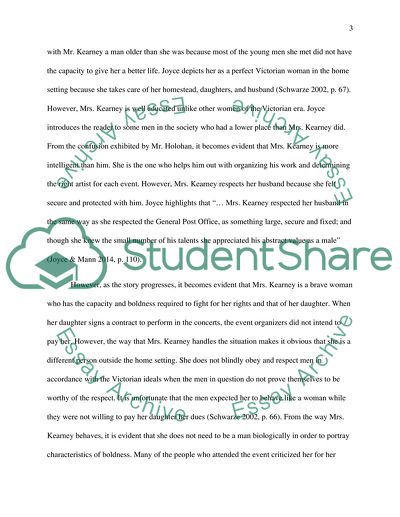Cite this document
(“Relations between the Sexes Essay Example | Topics and Well Written Essays - 2000 words”, n.d.)
Relations between the Sexes Essay Example | Topics and Well Written Essays - 2000 words. Retrieved from https://studentshare.org/gender-sexual-studies/1687525-in-2000-words-discuss-the-ways-in-which-relations-between-the-sexes-are-depicted-in-the-set-texts-jame-joyces-dubliners-i-choose-a-mother-and-a-painful-case-for-the-topic-and-compare-them-to-relations-of-the-sexes-depic
Relations between the Sexes Essay Example | Topics and Well Written Essays - 2000 words. Retrieved from https://studentshare.org/gender-sexual-studies/1687525-in-2000-words-discuss-the-ways-in-which-relations-between-the-sexes-are-depicted-in-the-set-texts-jame-joyces-dubliners-i-choose-a-mother-and-a-painful-case-for-the-topic-and-compare-them-to-relations-of-the-sexes-depic
(Relations Between the Sexes Essay Example | Topics and Well Written Essays - 2000 Words)
Relations Between the Sexes Essay Example | Topics and Well Written Essays - 2000 Words. https://studentshare.org/gender-sexual-studies/1687525-in-2000-words-discuss-the-ways-in-which-relations-between-the-sexes-are-depicted-in-the-set-texts-jame-joyces-dubliners-i-choose-a-mother-and-a-painful-case-for-the-topic-and-compare-them-to-relations-of-the-sexes-depic.
Relations Between the Sexes Essay Example | Topics and Well Written Essays - 2000 Words. https://studentshare.org/gender-sexual-studies/1687525-in-2000-words-discuss-the-ways-in-which-relations-between-the-sexes-are-depicted-in-the-set-texts-jame-joyces-dubliners-i-choose-a-mother-and-a-painful-case-for-the-topic-and-compare-them-to-relations-of-the-sexes-depic.
“Relations Between the Sexes Essay Example | Topics and Well Written Essays - 2000 Words”, n.d. https://studentshare.org/gender-sexual-studies/1687525-in-2000-words-discuss-the-ways-in-which-relations-between-the-sexes-are-depicted-in-the-set-texts-jame-joyces-dubliners-i-choose-a-mother-and-a-painful-case-for-the-topic-and-compare-them-to-relations-of-the-sexes-depic.


